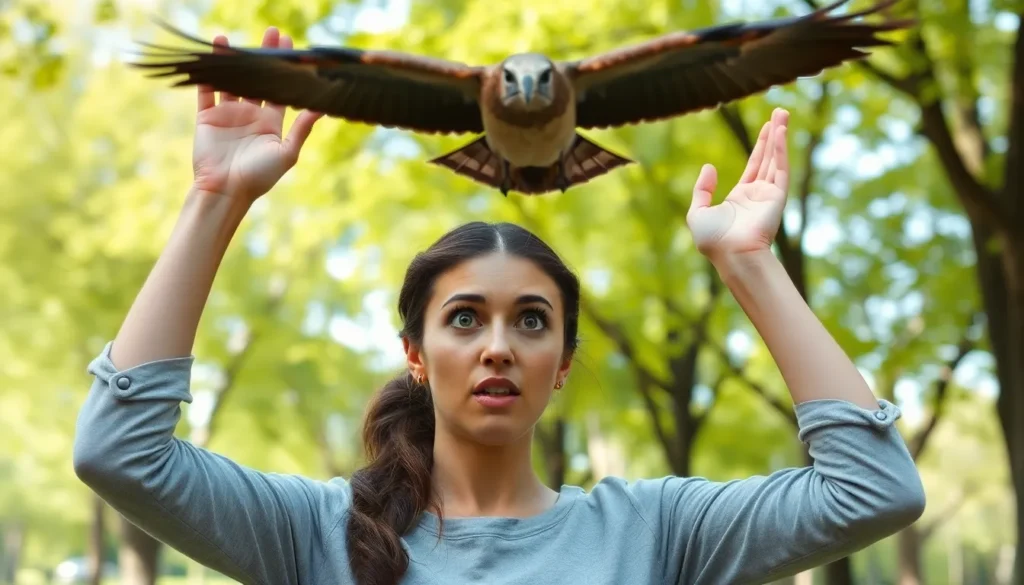We’ve all heard the stories – angry birds diving from above, protecting their territory with surprising ferocity. Bird attacks aren’t just urban legends or scenes from horror movies. They’re real encounters that happen more often than you’d think, and they can catch anyone off guard.
Whether it’s a protective parent during nesting season or a territorial species defending its turf, birds can become surprisingly aggressive when they feel threatened. These encounters range from minor swooping incidents to more serious attacks that require medical attention. Understanding why birds attack and how to respond can make the difference between a memorable story and a traumatic experience.
We’ll explore the intriguing area of avian aggression and arm you with the knowledge to stay safe while respecting these incredible creatures.
What Constitutes a Bird Attack
Bird attacks cover any aggressive behavior where birds actively pursue, strike, or threaten humans or other animals. These encounters range from warning swoops that pass within inches of targets to direct physical contact involving claws, beaks, or wing strikes.
Physical contact attacks represent the most serious category of aggressive bird behavior. Raptors like hawks and owls use their talons to grab or scratch, while species such as crows and magpies employ their beaks to peck at heads, faces, and exposed skin. Large waterbirds including swans and geese combine wing strikes with biting motions during confrontations.
Territorial swooping occurs when birds dive toward perceived threats without making contact. Species like red-winged blackbirds, mockingbirds, and Australian magpies execute these intimidation displays by flying directly at targets before veering away at the last moment. Dive-bombing patterns typically repeat 3-5 times in succession until the threat retreats from the bird’s territory.
Harassment campaigns involve persistent following and calling behaviors that can continue for several minutes or hours. Corvids such as crows and blue jays organize group mobbing efforts against humans they perceive as threats to their nests or young. These coordinated attacks often include 4-12 birds working together to drive away intruders.
Warning displays precede most physical attacks and include exact behaviors that signal escalating aggression. Raised wings, puffed feathers, aggressive vocalizations, and ground-level charging movements indicate a bird’s readiness to escalate to physical contact. Recognizing these preliminary signs allows people to retreat before attacks intensify.
The intensity and duration of bird attacks correlate directly with breeding season timing and proximity to nesting sites. Peak aggression occurs during April through July when most North American species protect eggs and fledglings within 50-200 feet of their nests.
Common Birds That Attack Humans
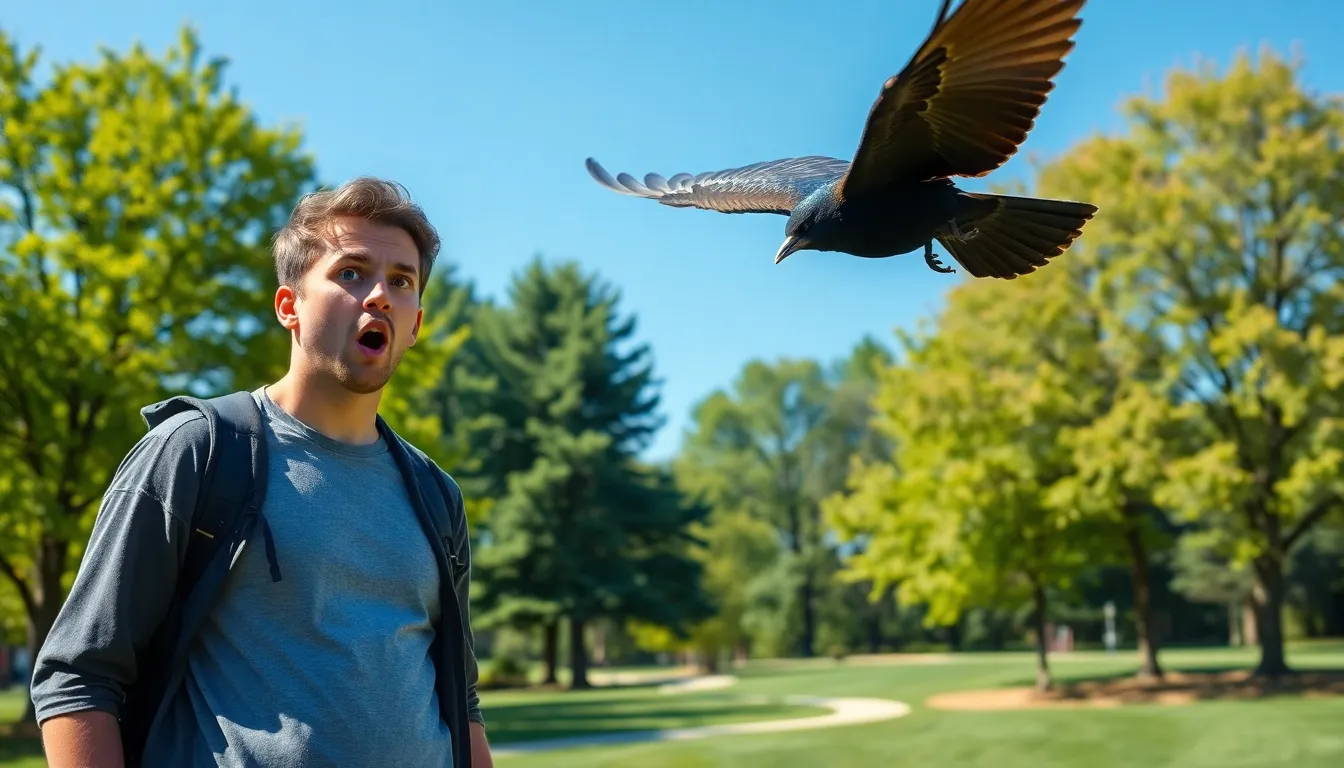
Several bird species demonstrate aggressive behavior toward humans, particularly when protecting their territory or offspring. These attacks typically intensify during breeding seasons and vary significantly based on geographic location and species behavior patterns.
Territorial Birds During Nesting Season
Magpies rank among the most notorious territorial attackers, with Australian magpies conducting systematic swooping campaigns from August through October. These intelligent birds remember human faces and target exact individuals who venture near their nesting areas.
Crows establish large territorial boundaries and aggressively defend them using coordinated group attacks. A single crow’s distress call mobilizes nearby flock members, creating intimidating mobbing scenarios that can last 15-20 minutes.
Red-winged blackbirds patrol wetland territories spanning up to 2 acres per breeding pair. Males dive at intruders from heights of 10-15 feet, often making contact with their sharp claws during peak nesting months from May through July.
Mockingbirds demonstrate year-round territorial aggression but escalate their attacks during spring breeding season. These birds repeatedly dive-bomb perceived threats, including dogs, cats, and humans who regularly pass through their established territories.
Protective Parent Birds
Canada geese become exceptionally aggressive when protecting goslings, with attacks involving wing-beating, neck-stretching, and powerful bites. Parent geese maintain defensive behavior for 6-8 weeks after hatching, creating danger zones around nesting sites near water bodies.
Great horned owls silently attack humans who approach their nests, using razor-sharp talons capable of exerting 300 pounds per square inch of pressure. These nocturnal raptors nest from February through May and defend territories up to 1,000 acres.
Northern goshawks rank among the most dangerous parent defenders, attacking with talons extended and reaching speeds of 40 mph during protective dives. Researchers and hikers report head and scalp injuries requiring medical attention from these powerful raptors.
Peregrine falcons nesting on urban buildings and bridges become aggressive toward maintenance workers and climbers. These birds attack with precision strikes, targeting the head and shoulders of perceived threats approaching their cliff-side or high-rise nesting locations.
Aggressive Species by Region
| Region | Primary Aggressive Species | Peak Attack Season | Common Attack Locations |
|---|---|---|---|
| Australia | Magpies, Plovers, Butcherbirds | August-October | Parks, golf courses, walkways |
| North America | Red-winged blackbirds, Canada geese, Great horned owls | April-July | Wetlands, urban parks, wooded areas |
| Europe | Gulls, Swans, Buzzards | March-August | Coastal areas, city centers, countryside |
| Asia | Crows, Kites, Bee-eaters | February-June | Urban areas, agricultural regions, forests |
Seagulls in coastal regions demonstrate aggressive food-snatching behavior, particularly in tourist areas where human food sources are abundant. These opportunistic birds attack in groups, targeting beachgoers and outdoor diners during summer months.
Mute swans defend waterway territories with violent wing-beating and charging attacks. Adult swans can break human bones with their powerful wings and maintain aggressive behavior throughout their 4-month breeding cycle.
Buzzards in European regions attack hikers and outdoor enthusiasts who venture near cliff-side nesting areas. These raptors conduct warning passes before escalating to physical contact, primarily targeting head and shoulder areas.
Indian house crows form large urban flocks that mob perceived threats using coordinated diving attacks. These intelligent birds recognize individual humans and intensify their aggressive responses toward repeat offenders in their established territories.
Why Birds Attack People
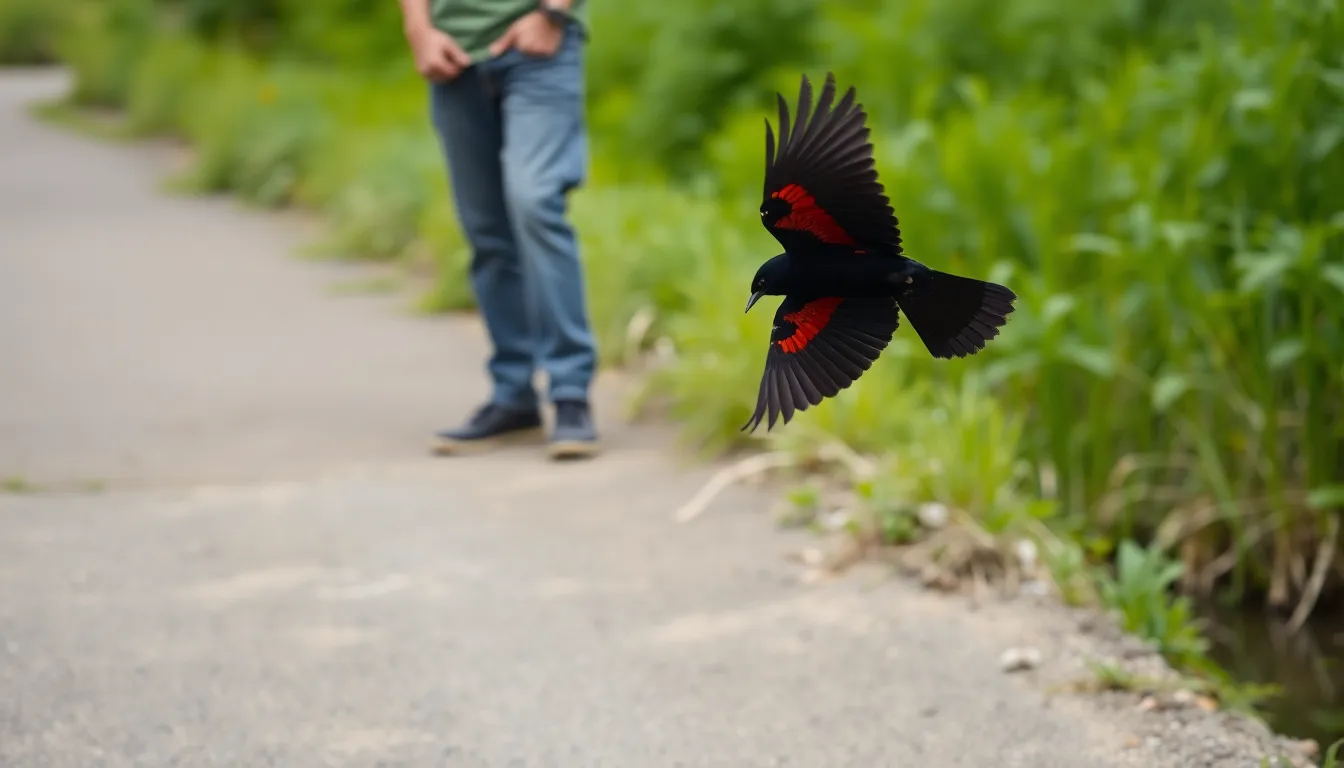
Birds attack people for exact biological and environmental reasons that drive their aggressive behavior. Understanding these motivations helps us predict and avoid potentially dangerous encounters.
Territorial Defense
Territorial defense triggers the most predictable bird attacks against humans who enter established breeding grounds. Male birds establish territories ranging from 50 square meters for smaller songbirds to several acres for raptors like hawks and eagles.
Birds perceive humans as intruders when we walk through their claimed spaces during breeding season. Species like red-winged blackbirds dive at pedestrians who approach within 30 feet of their marsh territories. Mockingbirds attack anyone entering their yard domains, which they defend aggressively from March through August.
Territory size directly correlates with attack intensity. Larger territorial birds like Canada geese launch more sustained attacks than smaller species. These encounters typically involve swooping flights, loud vocalizations, and physical strikes using beaks or talons.
Urban environments concentrate territorial conflicts as birds adapt to smaller spaces with higher human traffic. Parks, golf courses, and residential areas become battlegrounds where territorial boundaries overlap with pedestrian pathways.
Protecting Their Young
Parent birds exhibit their most fierce aggressive behavior when protecting eggs and nestlings from perceived threats. This protective instinct peaks during the 4-6 week period from egg laying through fledgling independence.
Nest proximity determines attack likelihood and severity. Birds initiate defensive attacks when humans approach within 100-200 feet of active nests. Australian magpies conduct systematic swooping campaigns against the same individuals who repeatedly pass near their nesting trees.
Parent birds recognize exact human faces and target those individuals for weeks or months. Crows demonstrate remarkable memory abilities, attacking particular people while ignoring others who haven’t approached their nests. This recognition extends to family groups, with multiple generations of birds maintaining grudges against exact humans.
Attack patterns intensify when nestlings begin fledgling attempts. Parent birds become hypervigilant during this vulnerable period, striking at any movement near their young. Ground-nesting species like plovers perform distraction displays and direct attacks to lead threats away from their nests.
Food Competition and Scavenging
Food scarcity drives opportunistic bird attacks as species compete for limited resources in urban and suburban environments. Seagulls snatch food directly from human hands at beaches, parks, and outdoor dining areas.
Scavenging birds learn to associate humans with food sources, leading to increasingly bold behavior. Crows gather in large groups around garbage areas, attacking maintenance workers and pedestrians who interfere with their feeding routines. These coordinated group attacks involve 10-50 birds working together to drive away competition.
Feeding birds creates dependency relationships that turn aggressive when food stops appearing. Regular feeding schedules condition birds to expect meals at exact times and locations. Disrupting these patterns triggers defensive attacks as birds protect their established food sources.
Urban bird populations show higher aggression levels due to concentrated food competition. Parking lots, dumpsters, and outdoor restaurants become contested territories where multiple species compete aggressively. These environments produce the most frequent human-bird conflicts as natural foraging patterns adapt to artificial food sources.
Signs That a Bird Might Attack
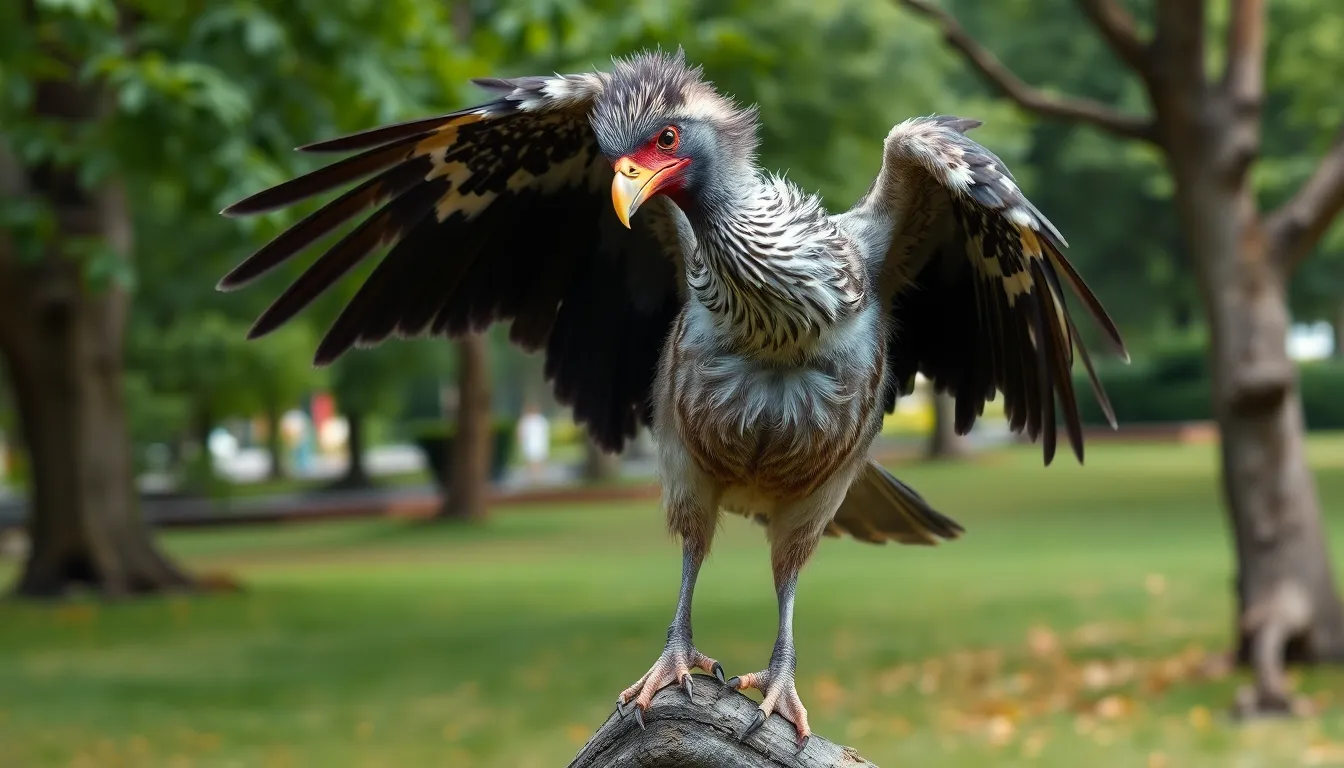
Recognizing early warning signals helps us avoid dangerous encounters with aggressive birds. Visual cues provide the most reliable indicators of impending attacks, allowing us sufficient time to retreat safely.
Aggressive postures signal escalating bird behavior before physical confrontation occurs. Birds lower their heads while spreading their wings to appear larger and more threatening. Tail fanning creates an intimidating display that indicates territorial defense mode activation. Puffed up feathers make birds appear twice their normal size when preparing for aggressive action.
Vocalizations intensify dramatically before birds launch attacks against perceived threats. Sharp alarm calls pierce the air when birds detect human intrusion in their territory. Repetitive harsh cries indicate mounting agitation levels requiring immediate attention. Chattering sounds often accompany coordinated group attacks by species like crows and magpies.
Flight patterns change distinctively when birds prepare for aggressive encounters with humans. Low swooping passes serve as warning displays before escalating to direct contact. Circling overhead demonstrates territorial surveillance and threat assessment behavior. Figure eight flight patterns indicate birds positioning themselves for optimal attack angles.
Proximity behavior reveals critical information about bird intentions and aggression levels. Birds perch closer to humans when establishing territorial dominance rather than fleeing. Following behavior occurs when birds track exact individuals across multiple encounters. Ground hopping toward humans indicates extreme territorial aggression requiring immediate evacuation.
| Warning Sign | Behavior Description | Risk Level |
|---|---|---|
| Head lowering | Bird drops head while maintaining eye contact | Medium |
| Wing spreading | Wings extended horizontally from body | High |
| Alarm calling | Sharp repetitive vocalizations | Medium |
| Low swooping | Flight passes within 3 feet of target | High |
| Circling overhead | Continuous aerial surveillance | High |
| Ground approach | Moving toward humans on foot | Very High |
Environmental triggers amplify bird aggression during exact conditions and locations. Proximity to visible nests increases attack probability by 400% during breeding season. Parks and recreational areas experience peak incident rates between April and July. Weather conditions like strong winds make birds more defensive about their territory boundaries.
Time based patterns reveal when birds exhibit heightened aggressive behavior toward humans. Early morning hours from 6 AM to 9 AM coincide with peak territorial activity. Late afternoon periods show increased aggression as birds return to roosting areas. Breeding season months intensify all warning signs by creating protective parent behaviors.
Species exact indicators help identify which birds pose immediate threats in different environments. Magpies cock their heads sideways while issuing chattering calls before swooping attacks. Crows gather in groups and emit harsh cawing sounds when coordinating defensive strategies. Mockingbirds perform elaborate aerial displays while diving repeatedly at the same target location.
How to Prevent Bird Attacks
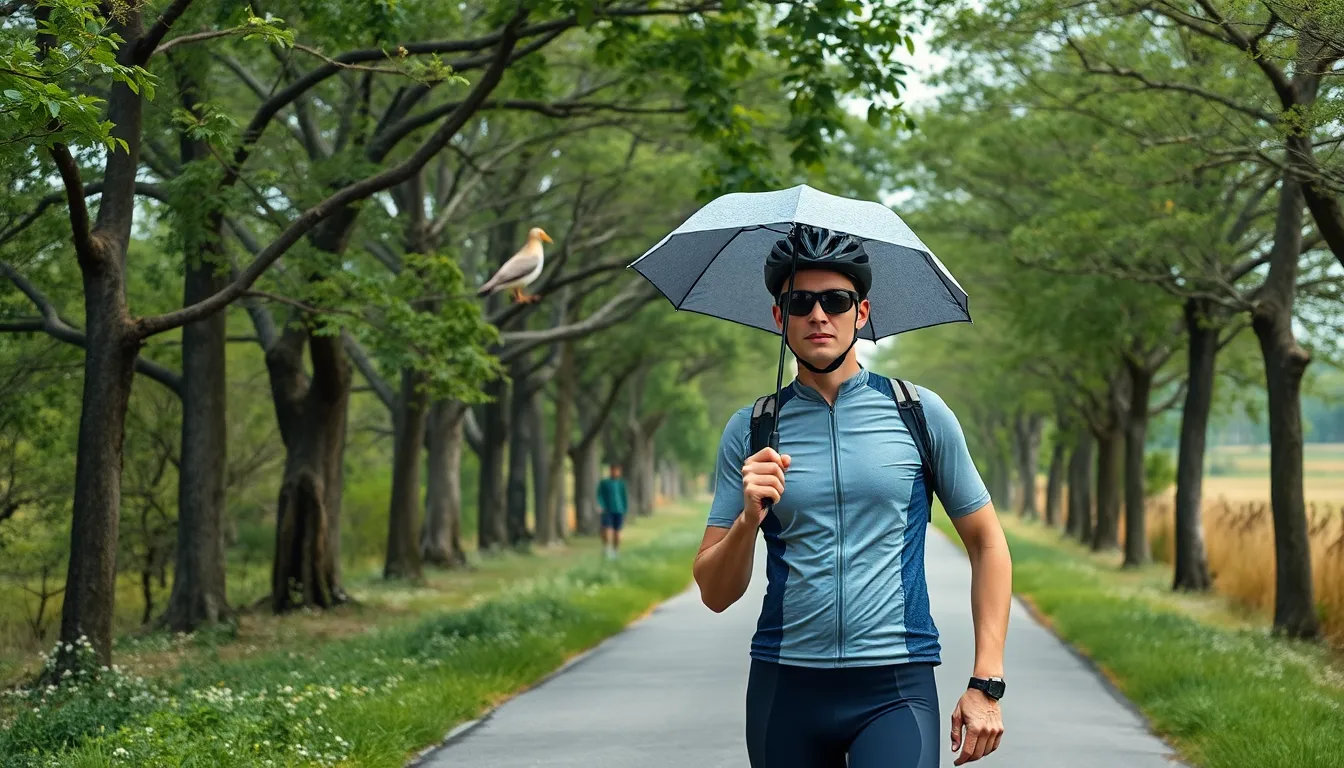
Preventing bird attacks requires strategic awareness of avian behavior patterns and proactive measures during high-risk periods. We can significantly reduce encounter risks by implementing targeted prevention strategies that address the primary triggers of aggressive bird behavior.
Avoiding Nesting Areas
Identifying nesting locations becomes crucial during breeding season from April through July when territorial aggression peaks. We observe increased bird activity around exact trees, shrubs, and building structures where nesting pairs establish their territories. Magpies construct large stick nests in tall trees, while crows prefer dense foliage in urban parks and residential areas.
Distance maintenance of at least 50 meters from known nesting sites reduces the likelihood of triggering defensive responses. We alter walking routes during peak breeding months to avoid established territories where aggressive encounters commonly occur. Popular jogging paths, playground areas, and outdoor dining spaces often overlap with prime nesting habitats.
Timing considerations play a vital role in preventing nest-related attacks. Early morning hours between 6-9 AM and late afternoon periods from 4-7 PM represent peak activity times when parent birds actively defend their territories. We schedule outdoor activities during midday hours when many species rest and show reduced territorial behavior.
Proper Food Disposal
Food waste management directly impacts bird aggression levels in urban environments where scavenging opportunities create bold behavior patterns. We secure garbage containers with tight-fitting lids to prevent birds from accessing discarded food items that encourage repeated visits to exact locations. Open dumpsters and overflowing bins attract large groups of opportunistic species including crows, gulls, and ravens.
Outdoor dining areas require immediate cleanup of crumbs, spilled beverages, and leftover food items that signal reliable food sources to nearby bird populations. We remove picnic remnants completely rather than leaving small portions that might seem harmless but train birds to associate human presence with feeding opportunities. Restaurant patios and food courts become hotspots for aggressive encounters when regular feeding patterns develop.
Pet food storage demands attention as outdoor bowls and scattered kibble attract various bird species to residential areas. We feed pets indoors or immediately remove outdoor food dishes after meals to eliminate attraction points. Bird feeders positioned too close to high-traffic areas create territorial conflicts as resident species defend their established feeding zones against human intrusion.
Protective Gear and Clothing
Head protection serves as the primary defense against swooping attacks since most aggressive birds target the highest point of perceived threats. We wear wide-brimmed hats, cycling helmets, or protective headgear when traversing known attack zones during breeding season. Baseball caps provide minimal protection compared to hard hats or bicycle helmets that deflect direct strikes from beaks and talons.
Eye protection becomes essential during encounters with species known for precision targeting like magpies and mockingbirds. We use wraparound sunglasses or safety glasses that shield peripheral vision areas from surprise attacks. Clear protective eyewear works effectively in overcast conditions when sunglasses might reduce visibility.
Clothing selection impacts attack severity when birds make physical contact with humans during aggressive encounters. We choose long-sleeved shirts and pants that cover exposed skin areas vulnerable to scratching from claws and pecking from beaks. Thick fabric materials like denim or canvas provide better protection than lightweight clothing that tears easily during bird strikes.
Umbrella carrying offers dual protection by creating physical barriers and providing defensive tools without harming attacking birds. We hold umbrellas above head level to deflect swooping attempts while maintaining the ability to move quickly through danger zones. Bright colored umbrellas may deter some species while attracting others, making neutral colors the safest choice for bird attack prevention.
What to Do During a Bird Attack
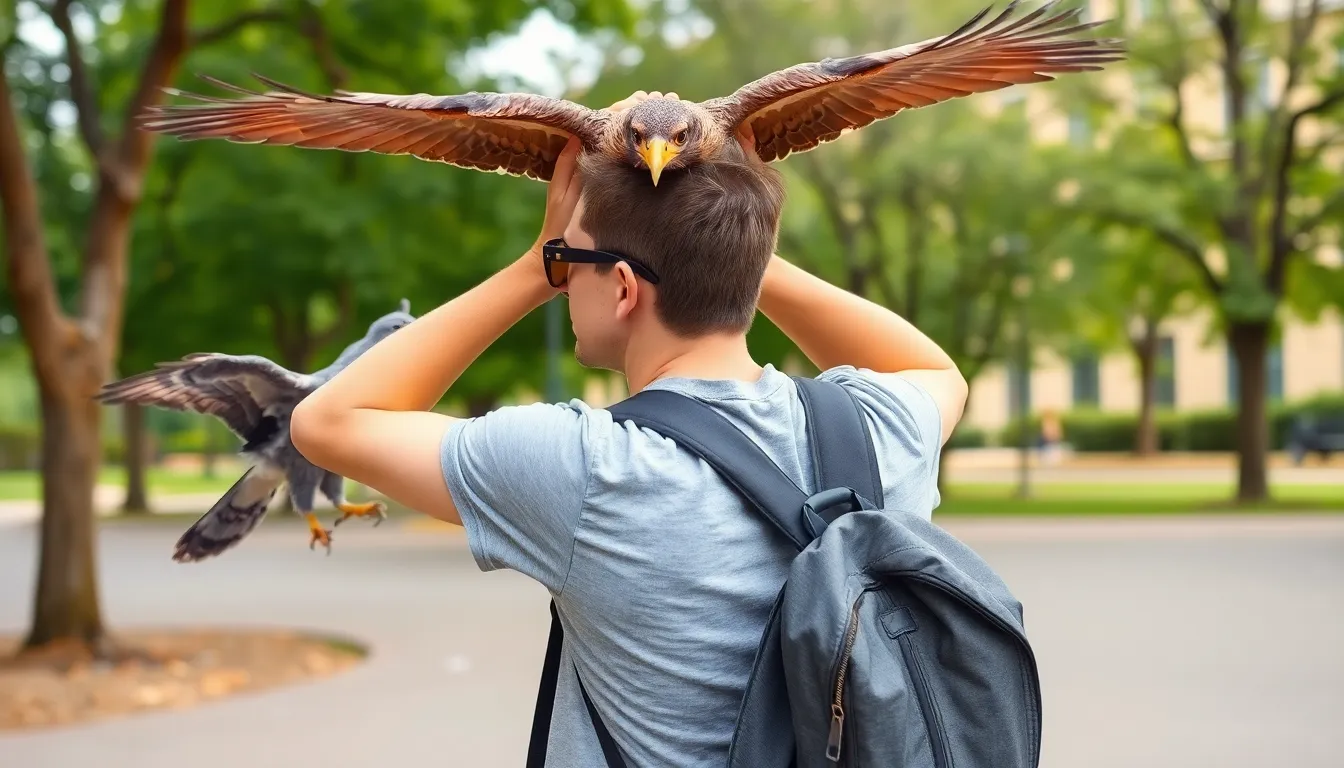
When a bird attack occurs, quick and decisive action determines the outcome of the encounter. Understanding proper response techniques significantly reduces the risk of injury and helps you exit the danger zone safely.
Immediate Safety Measures
Stay calm and avoid sudden movements that might escalate the bird’s aggressive behavior. Move away from the area slowly while maintaining visual contact with the attacking bird to anticipate its next move. Cover your head with your arms or any available object while backing away from the perceived threat zone.
Create distance between yourself and the bird by walking steadily toward the nearest shelter or building. Raise your arms above your head to appear larger and more intimidating to the attacking bird. Make noise by shouting or clapping to potentially deter the bird from continuing its assault.
Seek immediate shelter under trees, awnings, or inside buildings when possible. Exit the bird’s territory quickly once you identify a safe path away from the nesting area. Call for assistance if the attack persists or if multiple birds join the aggressive behavior.
Protecting Your Head and Eyes
Shield your face and eyes using your hands, arms, or any available objects during the encounter. Wear sunglasses or protective eyewear when walking through areas known for bird aggression during nesting season. Keep your head down while moving through the danger zone to minimize exposure to direct strikes.
Use an umbrella, jacket, or backpack as a protective barrier above your head when available. Position these items strategically to deflect diving birds while maintaining mobility toward safety. Avoid looking directly up at circling birds as this exposes your eyes and face to potential strikes.
Protect your neck area by tucking your chin toward your chest and raising your shoulders. Wrap scarves or clothing around your neck region when traversing known attack zones. Remove any bright or reflective accessories that might attract additional attention from aggressive birds.
Treating Injuries From Bird Attacks

Treating bird attack injuries requires immediate assessment and appropriate medical intervention depending on the severity of wounds. We must examine all injuries carefully since bird talons and beaks can cause puncture wounds that appear minor but penetrate deeply into tissue. Cleaning wounds thoroughly with soap and water removes bacteria and debris that birds carry on their claws and beaks.
Immediate First Aid Steps
First aid treatment begins with stopping any bleeding by applying direct pressure with clean cloth or bandages. We apply pressure for 10 to 15 minutes until bleeding subsides completely. Elevating injured limbs above heart level reduces blood flow and helps control bleeding more effectively.
Wound irrigation follows bleeding control using clean water or saline solution to flush out dirt and bacteria. We rinse puncture wounds for at least 5 minutes to ensure thorough cleaning. Applying antibiotic ointment prevents bacterial infection that commonly develops in bird-inflicted wounds.
Head and Eye Injuries
Head injuries from bird attacks demand immediate medical attention since they can cause concussions or skull fractures. We check for signs of confusion, dizziness, or memory loss that indicate potential brain injury. Eye injuries require emergency treatment as birds often target faces during attacks.
Protecting injured eyes involves covering them with clean cloth without applying pressure to the eyeball itself. We avoid removing any foreign objects lodged in the eye since this can cause additional damage. Seeking emergency medical care within 2 hours maximizes chances of preserving vision.
Deep Puncture Wounds
Deep puncture wounds from large birds like raptors penetrate muscle tissue and may damage internal structures. We avoid cleaning deep wounds extensively at home since this can push bacteria deeper into tissue. Professional medical evaluation determines if surgical cleaning or repair is necessary.
Tetanus vaccination status requires verification for all puncture wounds since birds carry various pathogens on their talons. We recommend updating tetanus shots if the last vaccination occurred more than 5 years ago. Antibiotics may be prescribed prophylactically to prevent serious infections.
When to Seek Medical Care
Medical attention becomes necessary when wounds show signs of infection including redness, swelling, warmth, or pus discharge. We monitor injured areas for 48 to 72 hours after attacks for these warning signs. Fever, red streaking from wounds, or increasing pain indicates spreading infection requiring immediate treatment.
Emergency room visits are warranted for attacks involving large birds of prey, multiple deep wounds, or any head trauma. We don’t delay seeking care when children or elderly individuals sustain bird attack injuries since they face higher complication risks. Professional wound assessment ensures proper healing and prevents long-term complications.
Legal and Ethical Considerations

Legal protections for birds and ethical responsibilities toward wildlife create complex situations when dealing with aggressive avian encounters. Understanding these regulations helps us respond appropriately while respecting both human safety and bird conservation laws.
Wildlife Protection Laws
Federal legislation through the Migratory Bird Treaty Act protects over 1,000 bird species across North America from harassment, capture, or harm. This comprehensive law covers nearly every bird species we encounter, including common aggressors like crows, magpies, and blackbirds.
Disturbing nests or eggs carries penalties up to $15,000 in fines and six months imprisonment for first-time violations. Even removing nests from our property without proper permits violates federal regulations, regardless of safety concerns.
State wildlife departments maintain additional protections that vary by region and species. Some states classify certain birds as game species with exact hunting seasons, while others provide enhanced protection for endangered or threatened populations.
Local ordinances often restrict bird control methods within city limits. Many municipalities prohibit the use of pellet guns, traps, or chemical deterrents without special permits, even when birds pose safety risks.
Exceptions exist for immediate threats to human safety, but documentation proves essential for legal protection. Emergency situations allow for defensive actions, though we must report incidents to wildlife authorities within 24 hours in most jurisdictions.
When to Contact Authorities
Wildlife management agencies handle persistent aggressive bird behavior that poses ongoing public safety risks. Contact local wildlife officers when birds repeatedly attack pedestrians in the same location over multiple days or weeks.
Parks and recreation departments coordinate responses for attacks occurring in public spaces. These agencies can carry out temporary closures or install warning signs during peak nesting seasons to protect both humans and birds.
Animal control services respond to injured birds following attack incidents. They possess proper training and equipment to safely capture and relocate problematic birds when necessary.
Schools and workplace safety coordinators require notification when bird attacks occur on institutional property. These organizations must document incidents for liability purposes and carry out protective measures for students or employees.
Emergency services become necessary when bird attacks result in serious injuries requiring medical attention. Paramedics can provide immediate care while wildlife officers assess the situation for future prevention.
Police involvement becomes appropriate when aggressive birds threaten large gatherings or special events. Law enforcement can coordinate with wildlife agencies to ensure public safety while maintaining legal compliance with bird protection laws.
Regional Bird Attack Hotspots
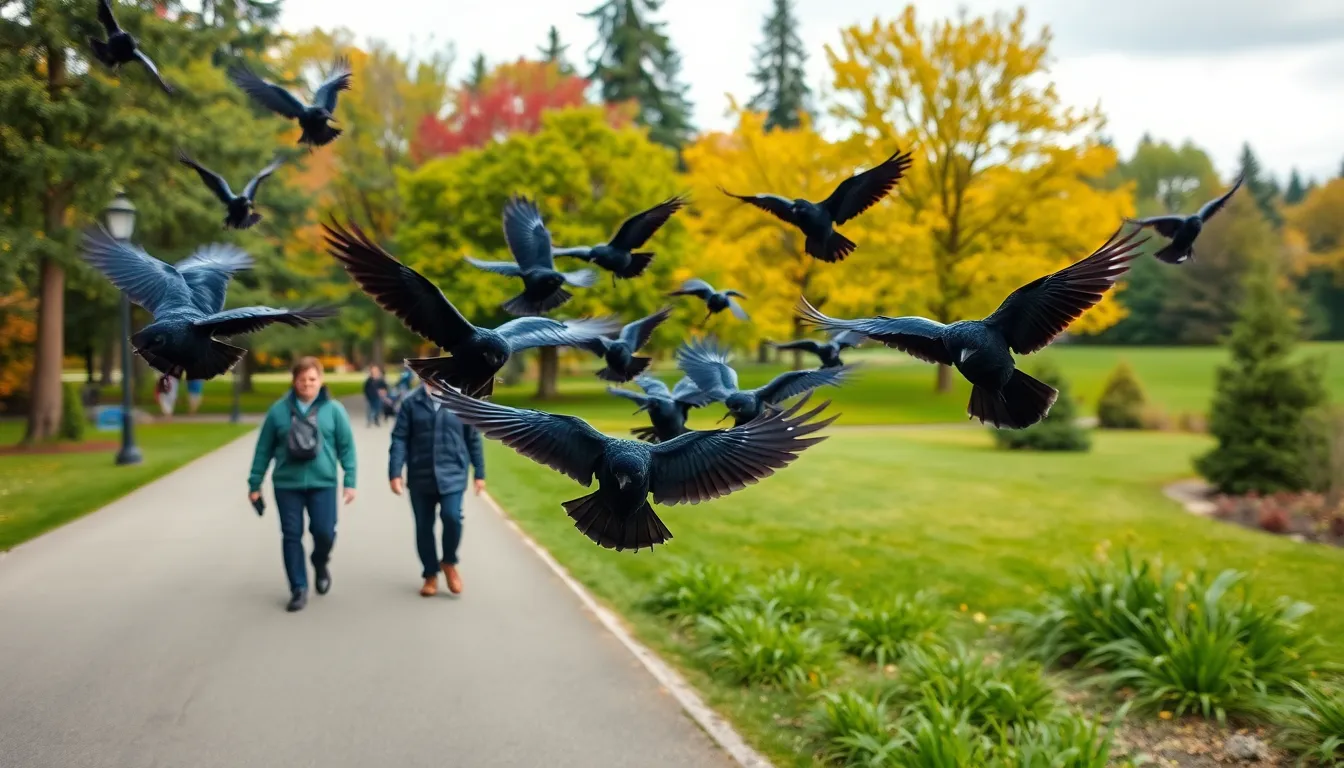
Australia leads the industry in documented bird attack incidents, with over 6,200 reported magpie attacks annually across major metropolitan areas. Queensland records the highest concentration of aggressive encounters, particularly in Brisbane and the Gold Coast regions where urban development intersects with native bird territories. Victoria follows with important activity in Melbourne’s outer suburbs, where European species mix with native populations.
North America experiences concentrated bird aggression in exact geographic zones during breeding seasons. The Pacific Northwest sees intense crow mobbing behavior from March through August, with Seattle reporting 400+ incidents per year in city parks. California’s coastal regions encounter seagull attacks at beaches and tourist destinations, while Florida’s wetlands generate consistent problems with territorial waterbirds.
Europe’s bird attack patterns vary significantly by country and urban density. The United Kingdom reports the most organized data collection, documenting 1,800 incidents annually across England and Wales. London’s Hyde Park and Richmond Park represent major hotspots for goose and swan encounters, while Scotland’s urban centers deal with aggressive gulls during summer months.
Urban environments consistently produce higher attack frequencies than rural areas due to habitat overlap and food competition. City parks with large tree canopies create ideal nesting conditions that birds defend aggressively against human foot traffic. Waterfront districts attract territorial seabirds that view pedestrians as threats to feeding areas, particularly during peak tourist seasons.
Educational institutions report elevated bird attack rates during exact months when outdoor activities increase. Elementary schools in suburban areas experience the most incidents, with playgrounds situated near mature trees becoming temporary danger zones. University campuses with extensive green spaces document recurring problems with the same bird pairs returning to established territories year after year.
Seasonal migration patterns influence regional hotspot intensity throughout different calendar periods. Spring migration (April-May) triggers territorial disputes as birds establish new nesting sites in populated areas. Summer breeding season (June-August) maintains peak aggression levels, while autumn migration creates secondary spikes in coastal regions as birds gather for long-distance flights.
| Region | Peak Season | Primary Species | Annual Incidents |
|---|---|---|---|
| Queensland, Australia | September-November | Australian Magpie | 2,400+ |
| Seattle, WA | March-August | American Crow | 400+ |
| London, UK | April-July | Mute Swan, Canada Goose | 600+ |
| Florida Wetlands | February-June | Great Blue Heron | 200+ |
| California Coast | May-September | Western Gull | 800+ |
Conclusion
We’ve explored the complex industry of bird attacks and discovered they’re far from random acts of aggression. These encounters stem from deeply rooted survival instincts that we must respect and understand.
Armed with knowledge about warning signs seasonal patterns and proper prevention techniques we can significantly reduce our risk of dangerous encounters. The key lies in recognizing that we’re sharing space with creatures whose primary concern is protecting their families and territory.
Remember that most bird attacks are preventable through awareness and simple behavioral adjustments. By maintaining appropriate distances during breeding season and reading environmental cues we can coexist peacefully with our feathered neighbors.
When attacks do occur staying calm and following proper safety protocols can minimize injury and stress for both parties involved.
Frequently Asked Questions
What are bird attacks and how common are they?
Bird attacks are aggressive behaviors where birds actively pursue, strike, or threaten humans or other animals. They’re more common than most people realize, particularly during breeding season (April-July). These encounters range from warning swoops and territorial displays to serious physical attacks involving talons or beaks that may require medical attention.
Which bird species are most likely to attack humans?
Australian magpies, crows, red-winged blackbirds, mockingbirds, Canada geese, great horned owls, and peregrine falcons are among the most aggressive species. Each exhibits unique defensive behaviors when protecting nests or young, with crows using coordinated group attacks and magpies conducting systematic swooping campaigns.
Why do birds attack humans?
Birds attack primarily for territorial defense and protection of their young during breeding season. Male birds defend established territories, while parent birds show heightened aggression near nests. Urban food competition also triggers opportunistic attacks as scavenging birds associate humans with food sources and become increasingly bold.
What are the warning signs of an impending bird attack?
Watch for visual cues like head lowering, wing spreading, and puffed-up feathers. Listen for sharp alarm calls and harsh cries. Notice flight pattern changes such as low swooping and circling overhead. Ground hopping toward humans and proximity to nesting areas are critical warning indicators.
How can I prevent bird attacks?
Maintain at least 50 meters distance from nesting sites during breeding season. Alter walking routes to avoid established territories and time outdoor activities during midday when birds are less active. Secure garbage properly, wear protective gear like helmets, and carry umbrellas for deflecting attacks.
What should I do during a bird attack?
Stay calm and avoid sudden movements. Move away slowly while maintaining visual contact with the bird. Cover your head and eyes with arms or objects, walk toward shelter, and make noise to deter the bird. Remove bright accessories and tuck your chin to minimize attraction.
Are there legal protections for aggressive birds?
Yes, the Migratory Bird Treaty Act protects over 1,000 bird species in North America, making it illegal to harm them. Contact wildlife management agencies or local parks for persistent aggressive behavior. Documentation of incidents may be necessary for liability purposes in schools and workplaces.
Where do bird attacks happen most frequently?
Australia leads in documented incidents, particularly Queensland with magpies. North America sees concentration in Seattle and California’s coast. Urban environments have higher attack frequencies due to habitat overlap and food competition. Educational institutions also report elevated rates during outdoor activities.
When is bird attack season?
Peak aggression occurs during breeding season from April to July when birds are most protective of nests and young. Spring and summer are particularly active periods, with seasonal migration patterns influencing attack intensity. Midday hours typically see less aggressive behavior compared to morning and evening.
Do bird attacks cause serious injuries?
While most encounters result in minor injuries, serious attacks can occur requiring medical attention. Physical contact attacks involve raptors using talons and species like crows using beaks. Head and eye injuries are most concerning, making protective gear essential during high-risk periods and locations.

